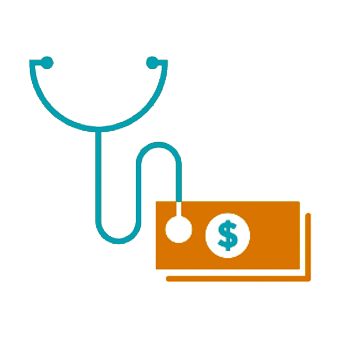Policy Analyst Parker James presented at the National Alliance of State & Territorial AIDS Directors (NASTAD) National HIV and Hepatitis Technical Assistance Meeting for the breakout session titled “Data Sharing between Surveillance and Medicaid Population Based Data Use.” His presentation focused on the successful collaboration between HIV Surveillance, Medicaid, and Hilltop in sharing HIV viral suppression data for quality measurement and improvement. This work is funded through the Health Resources and Service Administration’s Special Projects of National Significance Program, which supports the development of innovative models of HIV care and treatment.
In this article in the Health Affairs Forefront series, Hilltop Principal Data Scientist Morgan Henderson and Policy Analyst Morgane Mouslim posit that the reason there are no compliance studies is not because of lack of interest but because of the complexity of the landscape to which the regulation applies. Read the article online.
How well do US hospitals’ online prices posted for shoppable services correlate with their prices for the same service obtained via the telephone? In this cross-sectional study of 60 US hospitals, online and phone cash prices were poorly correlated within a given hospital for vaginal childbirth. These findings suggest that at US hospitals, price estimates for shoppable services posted online correlate poorly with prices obtained via phone; these findings suggest that patients will continue to face barriers to comparison shopping.
Assistance in Community Integration Services (ACIS) is a pilot program that is operated under Maryland’s §1115 demonstration waiver for HealthChoice, the state’s Medicaid managed care program launched in 1997. Under this pilot, the state provides a set of home and community-based services (HCBS) to a population that meets certain needs-based health and housing eligibility criteria. This summary report discusses ACIS program goals, eligibility criteria, services, and participating lead entities, followed by the study objectives, research methodology, key findings, and study limitations.
In this article in the Health Affairs Forefront series, Hilltop Policy Analyst Morgane Mouslim and Principal Data Scientist Morgan Henderson discuss whether novel and publicly available data generated from the Centers for Medicare and Medicaid Services’ new rule for transparency in coverage could be used to promote provider gender equity. Read the article online.
This report was prepared for the Maryland Department of Health as part of the second annual round of Hilltop Challenge awards. It highlights key concepts and findings in recent nursing facility quality of care literature and reviews two quality frameworks that inform nursing facility quality of care initiatives in Maryland. Below are highlights from three distinct studies.
Principal Policy Analyst Dolapo Fakeye, PhD, presented this poster at the 2023 AcademyHealth Annual Research Meeting (ARM) held June 24-27, 2023, in Seattle.
In 1997, Maryland implemented HealthChoice—a statewide mandatory Medicaid and Children’s Health Insurance Program (CHIP) managed care program—under authority of a waiver through §1115 of the Social Security Act. The provisions of the Affordable Care Act (ACA) that went into effect in 2014 marked another milestone by extending quality coverage to many more Marylanders with low income. Over 20 years after its launch, HealthChoice covers close to 90% of the state’s Medicaid and Maryland Children’s Health Program (MCHP) populations. Since the inception of HealthChoice, the Maryland Department of Health (MDH) has requested and received seven §1115 waiver renewals.
The Hilltop Institute, on behalf of MDH, evaluates the program annually; this evaluation covers the period from CY 2017 through CY 2021.
Senior Policy Analyst Katherine Holmes, MPS, presented her research in this poster at the 2023 AcademyHealth Annual Research Meeting (ARM) held June 24-27, 2023, in Seattle.
Principal Policy Analyst Dolapo Fakeye, PhD, gave this podium presentation at the 2023 AcademyHealth Annual Research Meeting (ARM) held June 24-27, 2023, in Seattle.





